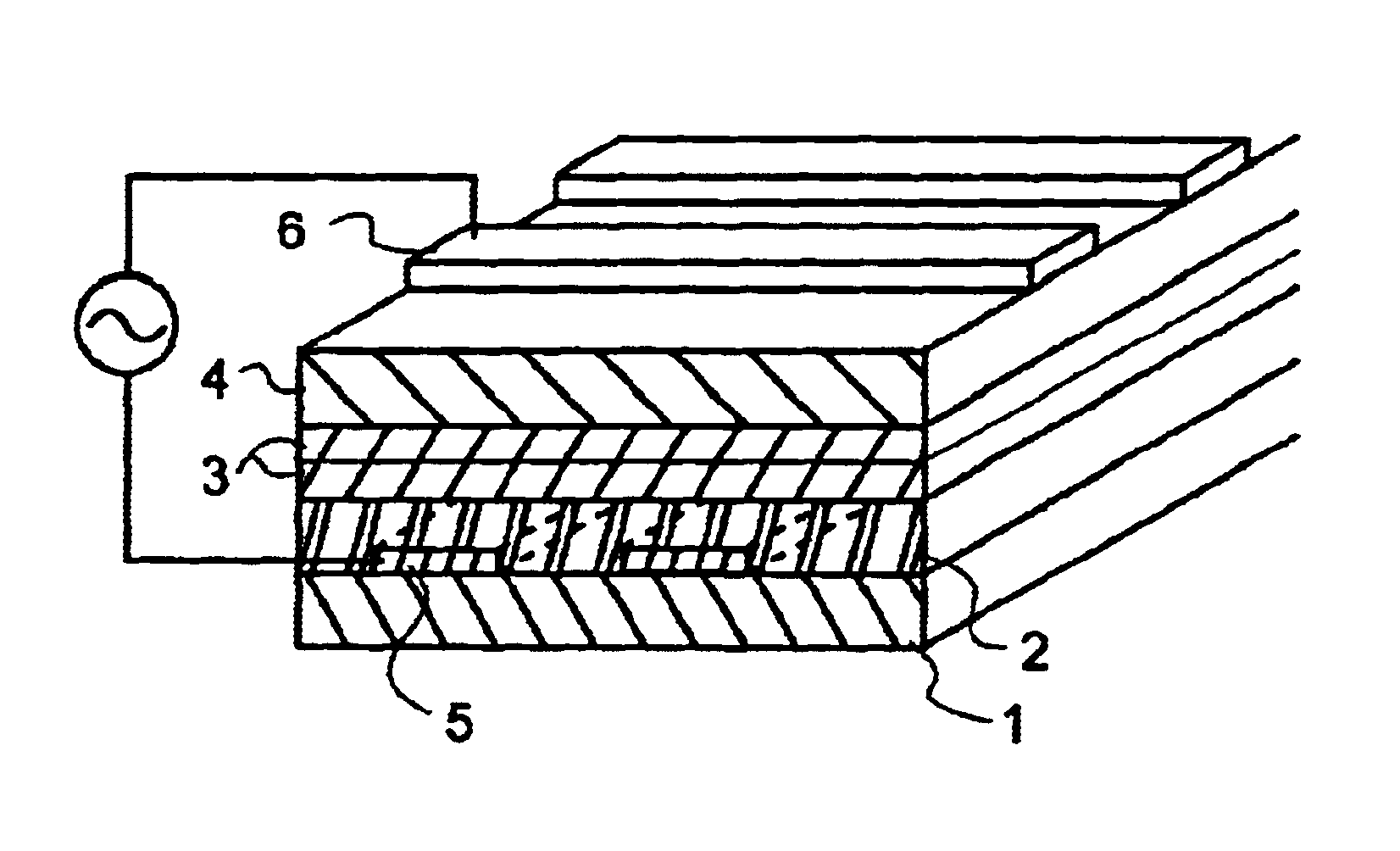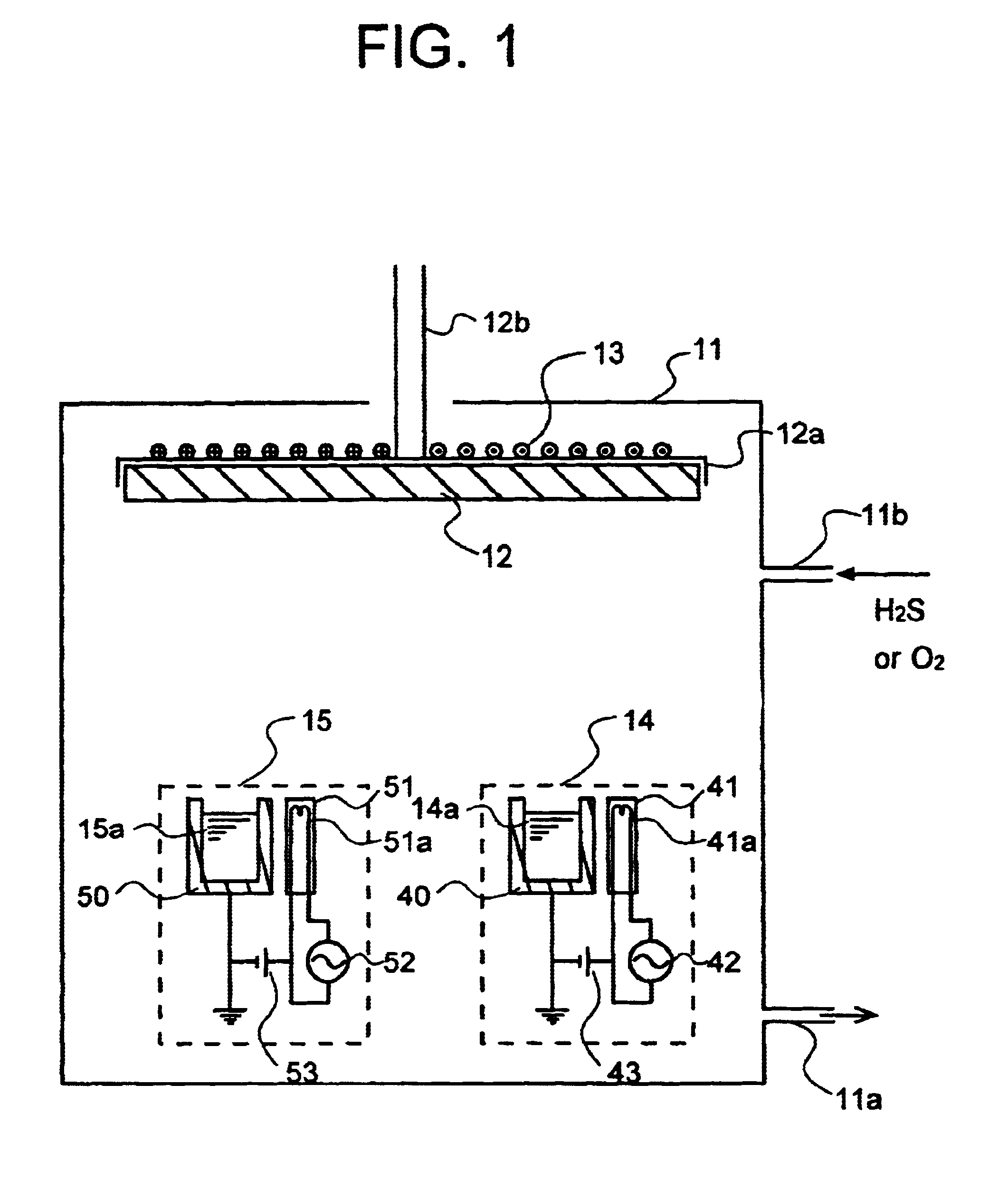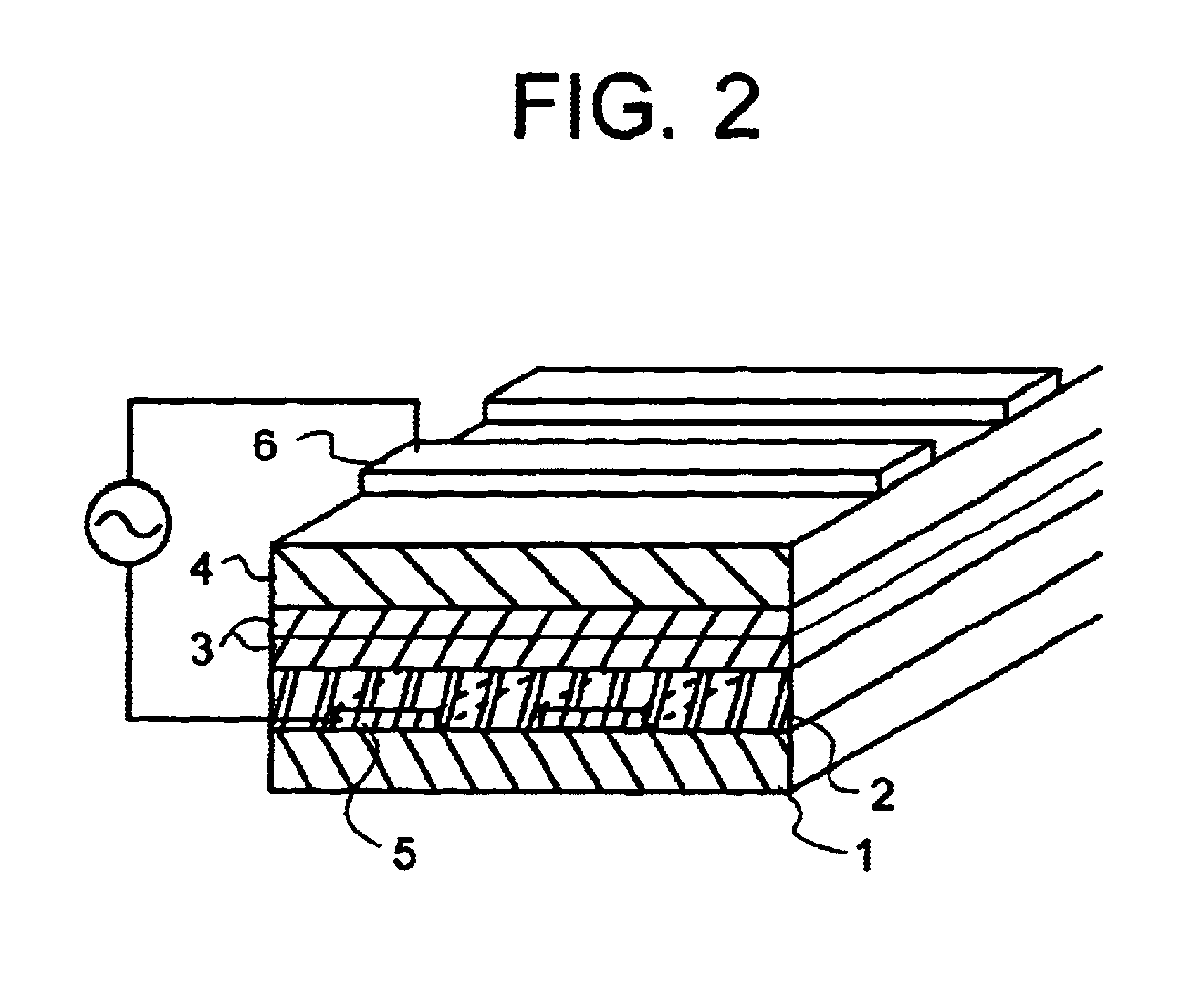Phosphor multilayer and EL panel
- Summary
- Abstract
- Description
- Claims
- Application Information
AI Technical Summary
Problems solved by technology
Method used
Image
Examples
example 1
FIG. 1 illustrates an exemplary evaporation chamber which can be used in the manufacturing method of the invention. One electron gun and one resistive heating cell were used instead of a two-point controlled electron gun.
An EB source 15 containing BaS powder having 5 mol % of Eu added and a resistive heating cell (14) containing Al.sub.2 S.sub.3 powder were placed in a vacuum chamber 11. The substances were simultaneously evaporated from the respective sources, and deposited on a rotating substrate heated at 400.degree. C., forming a Ba.sub.x Al.sub.y O.sub.z S.sub.w :Eu layer. The rates of evaporation from the respective sources were adjusted so that the film was deposited on the substrate at a deposition rate of 1 nm / sec. During evaporation, H.sub.2 S gas was admitted at 20 SCCM. The thin film formation was followed by annealing at 750.degree. C. for 10 minutes in air, yielding the first thin film of 300 nm thick.
By an EB evaporation technique using a ZnS pellet having 0.5 mol % o...
PUM
 Login to View More
Login to View More Abstract
Description
Claims
Application Information
 Login to View More
Login to View More - R&D Engineer
- R&D Manager
- IP Professional
- Industry Leading Data Capabilities
- Powerful AI technology
- Patent DNA Extraction
Browse by: Latest US Patents, China's latest patents, Technical Efficacy Thesaurus, Application Domain, Technology Topic, Popular Technical Reports.
© 2024 PatSnap. All rights reserved.Legal|Privacy policy|Modern Slavery Act Transparency Statement|Sitemap|About US| Contact US: help@patsnap.com










